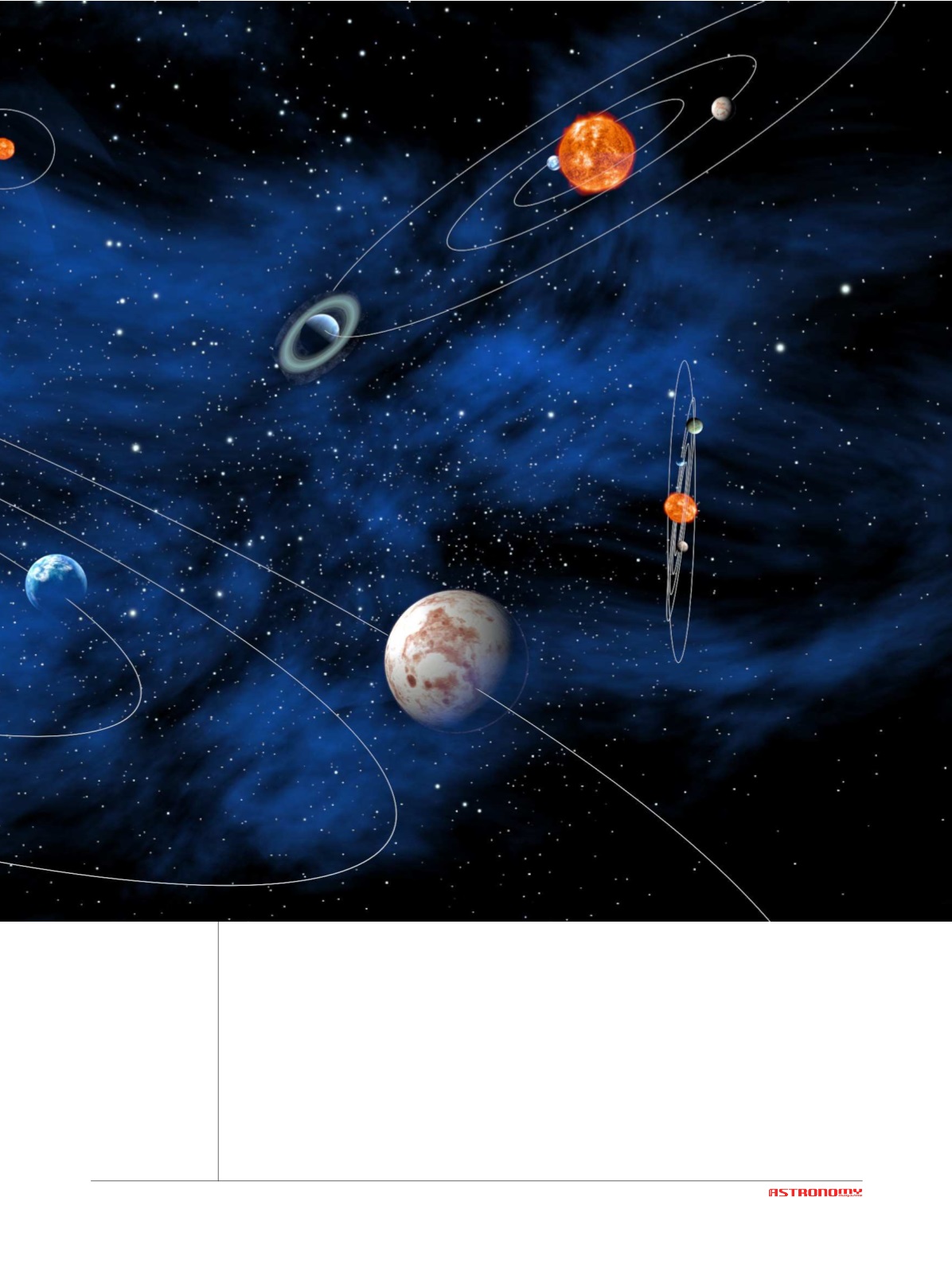

SEPTEMBER-OCTOBER 2017
the calculation of the planetary masses
(using the radial velocity method) with a
maximum error of 10%. To determine the
precise mass of a planet, however, it is nec-
essary to know equally precisely what the
mass of its star is. Then, if we also know
the star’s diameter and age, we can have
an idea of the system’s evolutionary stage.
And this is where the measurements of
stellar oscillations come into play. PLATO
will perceive them as very weak periodic
variations in luminosity, characterised by a
short duration (the 5-minute oscillation of
the Sun, for example, is well known).
Using the mathematical tools available in
asteroseismology, based on the properties
of the oscillations PLATO measures re-
searchers will be able to determine the in-
ternal structure of the observed stars, the
movements of their outermost surface lay-
ers, and thereby to reach sufficiently reli-
able values (error lower than 10%) of their
age, mass and diameter. The more precisely
these values can be calculated, the easier it
















